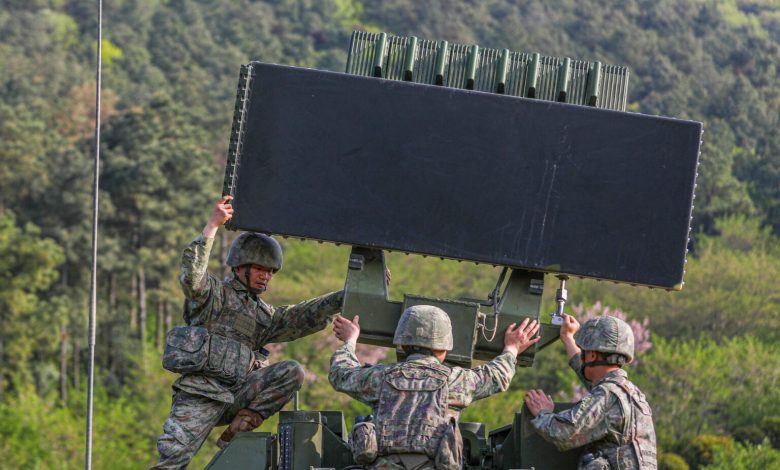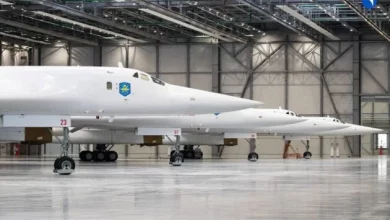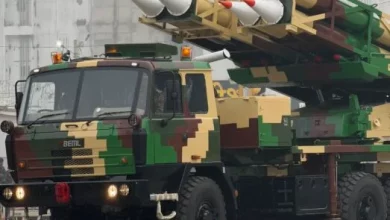China Plans ‘Great Wall’ Anti-Drone Defense for Naval Warships

Chinese Navy researchers have revealed plans for a multilayered defense system to protect warships from attacks by large numbers of low-cost unmanned aerial systems (UAS).
Described as a digital-age “Great Wall,” the capability is intended to block and neutralize swarms of drones before they can strike their targets.
Published in the peer-reviewed journal Command Control & Simulation, the research warned that small, inexpensive drones — potentially built from commercially available components — could overwhelm traditional naval defenses.
This counter-swarm system would combine satellites, AI-powered sensors, and advanced weapons, including hypersonic missiles, lasers, and microwave beams, according to Hong Kong-based news agency South China Morning Post.
The outlet noted that the study’s proposed countermeasures align with various anti-UAS technologies showcased in Beijing’s 2025 Victory Day Parade.
These included high-power microwave weapons, LY-1 ship-mounted lasers, and CJ-1000 hypersonic cruise missiles capable of striking drone-carrying cargo planes at long distances.
A Beijing-based defense expert, speaking on condition of anonymity in an interview with the South China Morning Post, said, “It could be a pure coincidence, but [the parade] brings the idea from paper to life.”
Drone ‘Motherships’ Development
Alongside expanding its air defenses, China is developing its own drone swarms to enhance reconnaissance and surveillance capabilities.
In 2022, Beijing unveiled a large drone “mothership” capable of launching UAS systems, observation platforms, and other unmanned weapons.
Known as the Zhu Hai Yun, the vessel measures 290 feet (88 meters) long and 20 feet (6 meters) high, with a wide deck for carrying multiple platforms and a top speed of 18 knots (21 miles/33 kilometers per hour).
When navigating ports, the boat can be controlled remotely or manually onboard for monitoring.
Zhu Hai Yun’s launch was followed in 2024 by an airborne mothership called the Jiu Tian, which is designed to deploy up to 100 small kamikaze drones.
Propelled by a single engine, Jiu Tian can reach speeds of up to 435 miles (700 kilometers) per hour and a range of 4,350 miles (7,000 kilometers) while supporting payloads of up to 6.6 tons (14,550 pounds), according to a US Department of Defense analysis.
Its nose houses an electro-optical and infrared sensor turret, as well as a dome for surface-scanning radar.
The system can carry out cargo transport, maritime surveillance, reconnaissance operations, disaster-relief support, and the deployment of long-range weapons.
The aircraft has a wingspan of 82 feet (25 meters), a length of 52 feet (16 meters), and a flight endurance of more than 12 hours.





